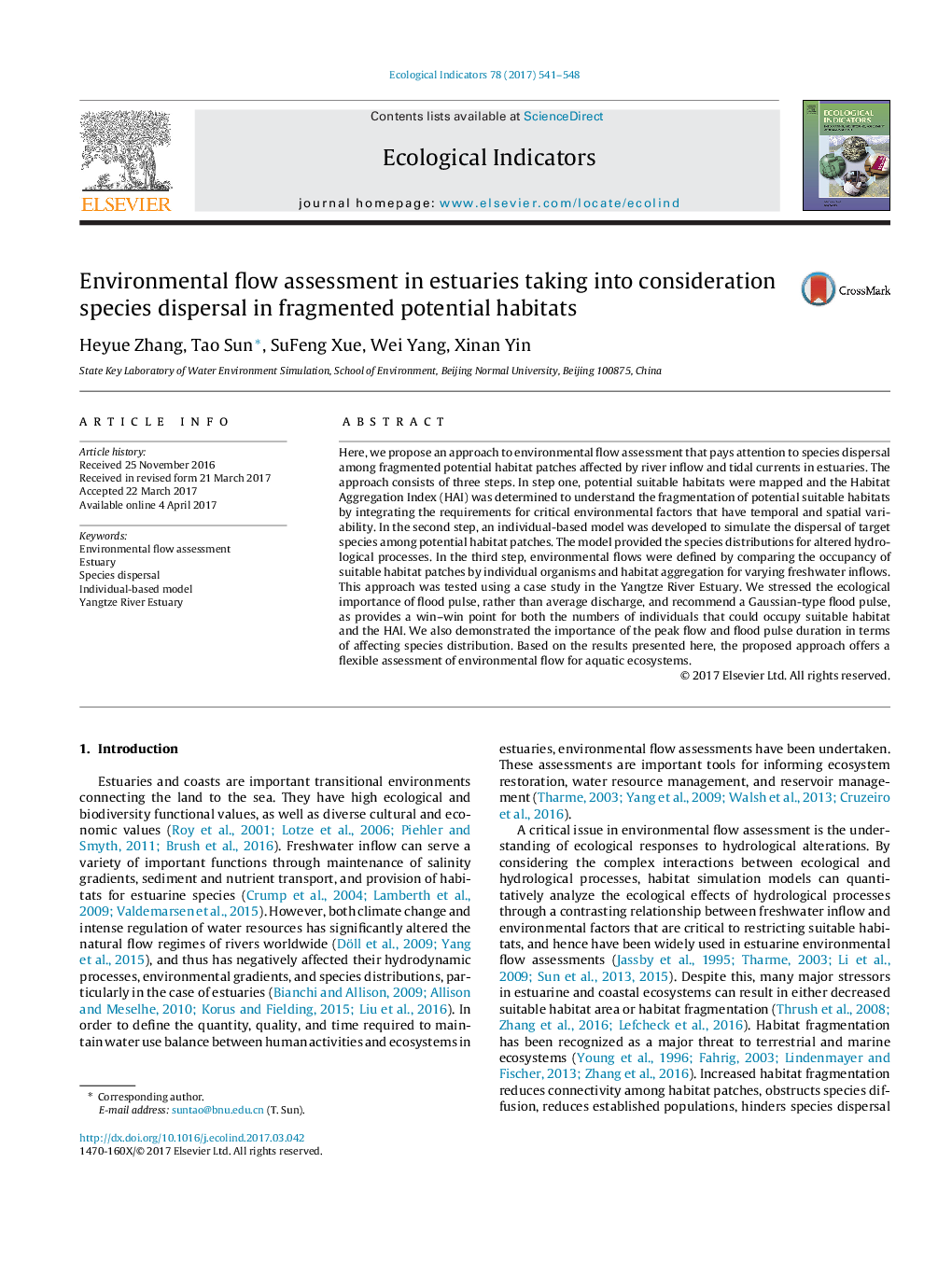| Article ID | Journal | Published Year | Pages | File Type |
|---|---|---|---|---|
| 5741660 | Ecological Indicators | 2017 | 8 Pages |
â¢We develop a model for environmental flow assessment considering species dispersal.â¢The model coupling spatial explicit habitat model and individual disperse model.â¢Flow were defined based on individual number in suitable habitat and aggregation.â¢A Gaussian-type flood pulse was recommended for the Yangtze River Estuary.â¢We highlight the importance of peak flow and flood pulse duration in EFS.
Here, we propose an approach to environmental flow assessment that pays attention to species dispersal among fragmented potential habitat patches affected by river inflow and tidal currents in estuaries. The approach consists of three steps. In step one, potential suitable habitats were mapped and the Habitat Aggregation Index (HAI) was determined to understand the fragmentation of potential suitable habitats by integrating the requirements for critical environmental factors that have temporal and spatial variability. In the second step, an individual-based model was developed to simulate the dispersal of target species among potential habitat patches. The model provided the species distributions for altered hydrological processes. In the third step, environmental flows were defined by comparing the occupancy of suitable habitat patches by individual organisms and habitat aggregation for varying freshwater inflows. This approach was tested using a case study in the Yangtze River Estuary. We stressed the ecological importance of flood pulse, rather than average discharge, and recommend a Gaussian-type flood pulse, as provides a win-win point for both the numbers of individuals that could occupy suitable habitat and the HAI. We also demonstrated the importance of the peak flow and flood pulse duration in terms of affecting species distribution. Based on the results presented here, the proposed approach offers a flexible assessment of environmental flow for aquatic ecosystems.
